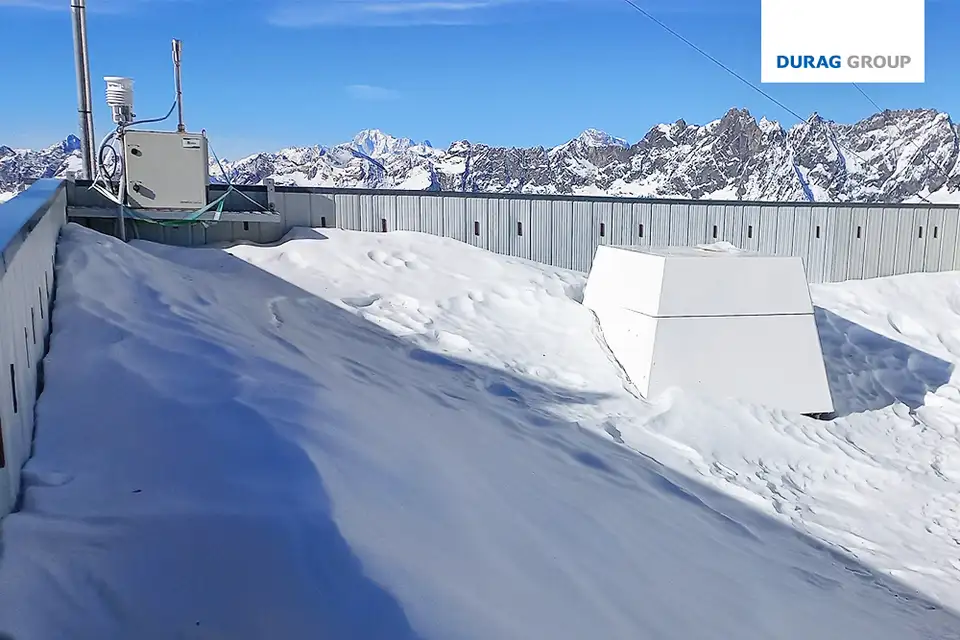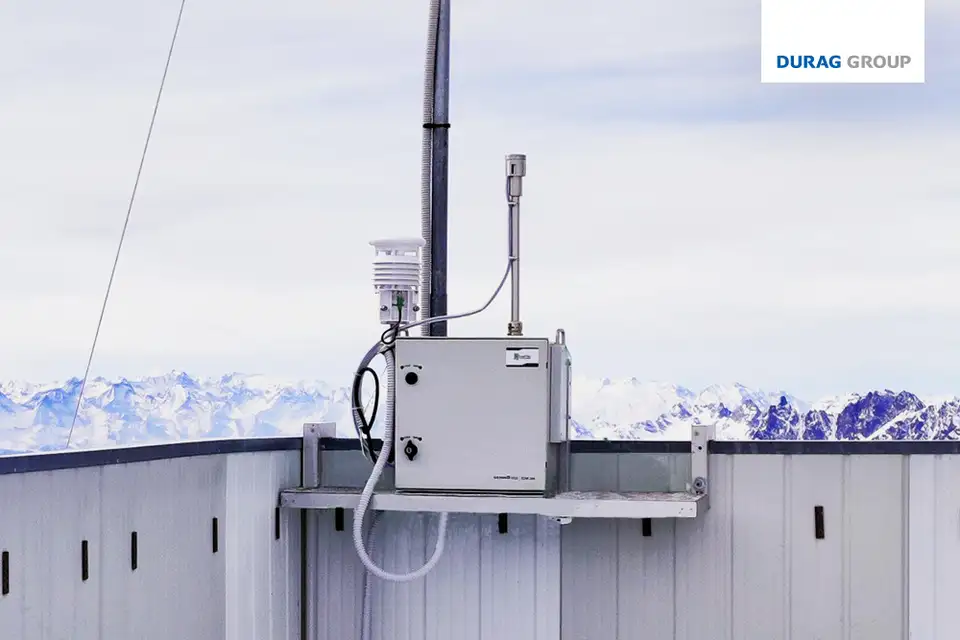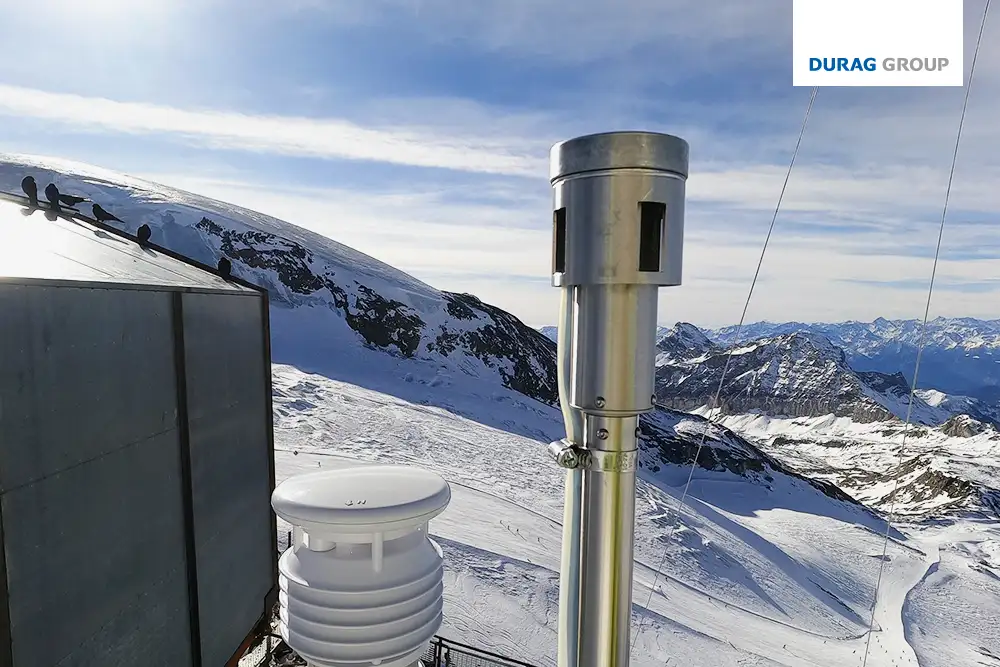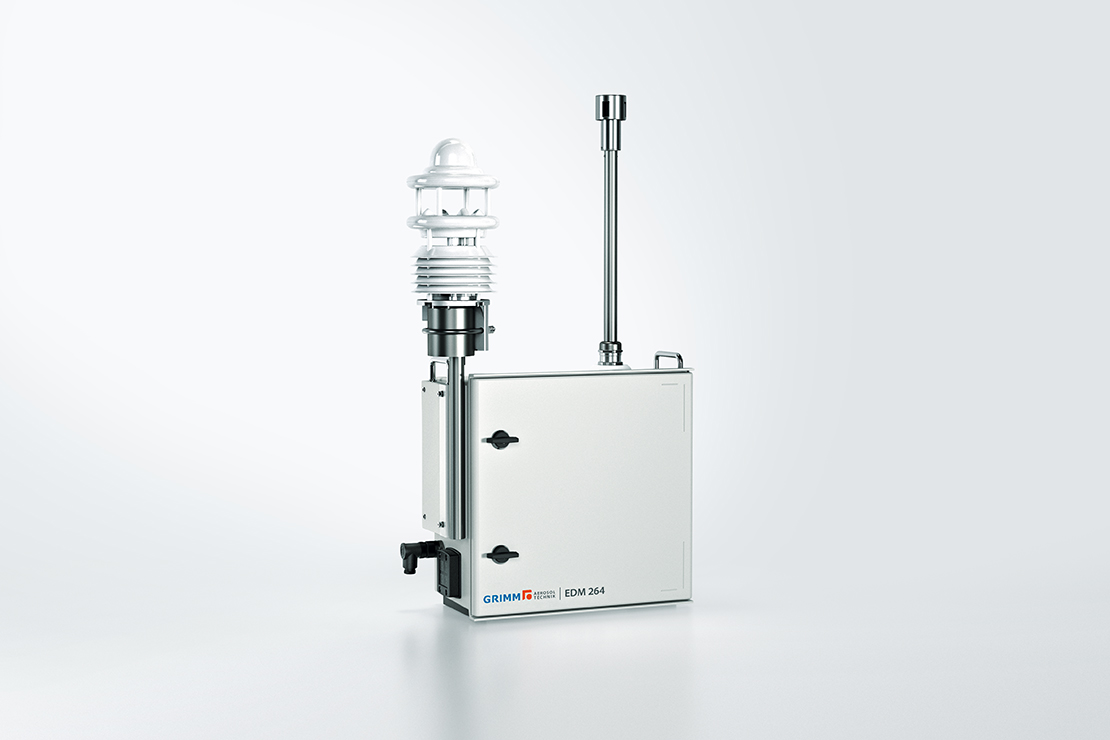
Atmospheric Research Project: Effects of the Climate Change
The AirQualifier EDM 264 from GRIMM AEROSOL TECHNIK is used in a government-funded aerosol research project in the Italian Alps. There, the influence of aerosols on climate change and glacier melt is being investigated.
At a glance
| Customer: National Research Council Italy (Consiglio Nazionale delle Ricerche, CNR) Industry: Science and research Applications: Aerosol measurement on the glacier field Plateau Rosa Product: AirQualifier EDM 264 |
Aerosol analysis on the glacier field Plateau Rosa
The study of aerosols at the Plateau Rosa site is particularly important because it allows to analyze the influence of anthropic and natural sources on the composition of mountain areas nearby the Po Valley, one of the most polluted and densely populated European regions. In addition, the proximity of the GAW Station to the Testa Grigia glacier allows the study of atmospheric aerosol impacts on glacier darkening and albedo changes. Albedo describes the reflected radiation from surfaces that are not self-luminous, such as snow; the brighter the surface, the greater the reflected radiation. In fact, some components of atmospheric aerosol, such as black carbon and dust, can reduce snow albedo and accelerate snow melting.
Finally, the observatory is often in the free troposphere and measurements at this site give us the opportunity to study the composition of the background atmosphere. Beginning in September 2021, this is determined to be a continuous and long-term study. All the researchers are working for the Italian National Research Council (Consiglio Nazionale delle Ricerche, CNR).
The AirQualifier EDM 264 was chosen to fit best for this research project. Previous experience with instruments of GRIMM AEROSOL TECHNIK convinced the CNR scientists of its measurement precision, reliable uptimes and long-term accuracy of our products and their ability to withstand harshest outdoor conditions.
The measuring station and its challenges
The Testa Grigia – Plateau Rosa station (45.93436 N, 7.70778 E) was installed at an altitude of 3480 meters above sea level back in 1948 when, far from urban and polluted areas, it was an ideal place for cosmic radiation measurements. Testa Grigia is one of the highest measuring stations of the “Global Atmosphere Watch” (GAW) program of the World Meteorological Organization (WMO). Due to its high altitude and position, it is very often located above the planetary boundary layer, which makes it suitable for the measurement of background atmospheric composition. Meteorological conditions at this place can be extreme. Since the beginning of the aerosol measurements the observatory experienced temperature as low as -24 °C. The AirQualifier EDM 264 successfully kept operating in these conditions. Furthermore, access to the observatory is not always possible due to adverse weather conditions.
Since aerosol monitoring activities were started at the observatory in 2021, several events of dust transport from the Sahara Desert were already observed. On March 16, 2022 a particularly significant and long-lasting dust event was observed at Testa Grigia station, when hourly coarse particle concentration averaged 5 #/cm3, which is about 50 times higher than the annual mean. In 2023, the first Sahara dust transport event was observed on February 17.


Interpretation of data: Long-distance transport and effects of dust
The gathered data is used to understand what actions need to be done to remove potential contamination from local sources using the procedure described by Beck et al. 2022 (Atmos. Meas. Tech., 15, 4195–4224, 2022). Measurement data is automatically transferred to and stored in the CNR server and available to multiple institutes inside CNR.
Data are analyzed using multivariate statistical analysis to detect the impact of particles from different origin. For example, the long-distance transport of dust is being studied and attempts are being made to understand dust particle impact on the optical properties of the cryosphere of the alpine glaciers. In addition, we deploy OPC measurements to study the outflow of polluted air masses from the Po basin, one of the European pollution hot-spots. This allows us to investigate the impact of anthropogenic activities on remote alpine environments.
Participants / team
• Achim Edfelder, Sales Expert GRIMM AEROSOL TECHNIK
• Project manager at our distributor XEarPro: Maria Grazia Perrone
• Plateau Rosa CNR research team: Stefania Gilardoni, Paolo Bonasoni, Eros Mariani, Biagio Di Mauro, Davide Putero, Angela Marinoni, Luigi Mazari Villanova



